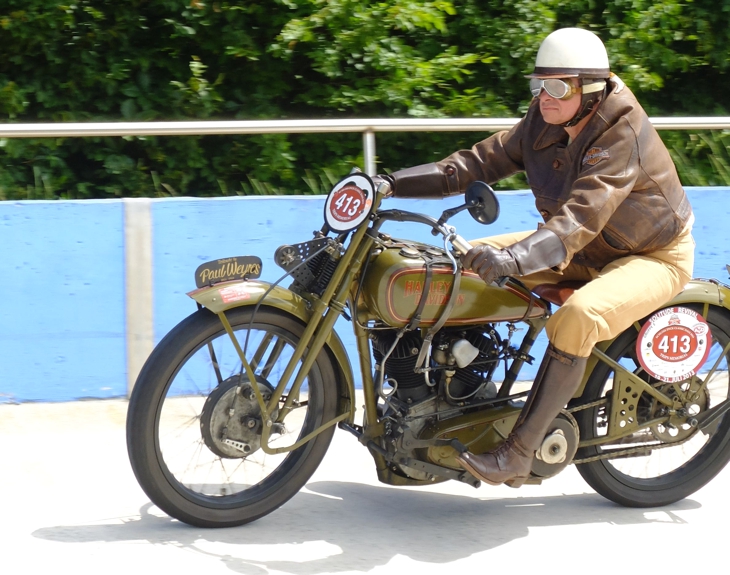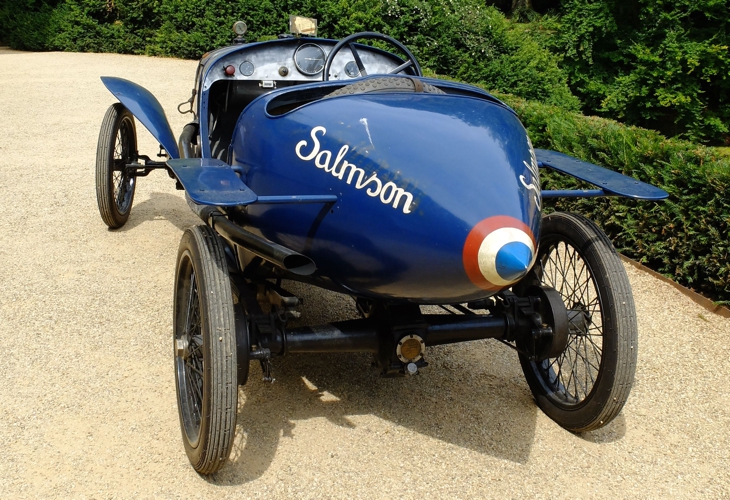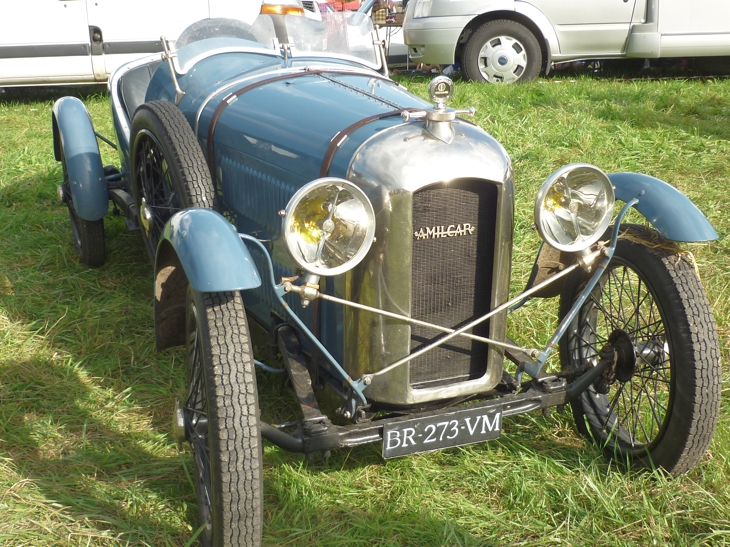On the continent there are few occasions to actually race prewar cars and motorcycles like in the old days. Of course, there a quite a number of events in France and Germany where visitors can enjoy veteran and vintage vehicles on public roads or specially prepared „race“ tracks. For example, in France there is the Grand Prix Rétro d’Yvois held annually on the circuit in the town of Carignan near the Belgian border. German enthusiasts can choose among events as diverse as the “Classic Days” at Schloss Dyck the „Kronprinz Wilhelm Rasanz“ run near Duesseldorf, the “Herkomer Konkurrenz” in Bavaria, and the “Vintage Race Days” at the race course in Rastede (http://www.vintageracedays.de) in Lower Saxony. Last but not least, the „Großglockner Grand-Prix“ has been revived, recently. In addition to that, there are lots of events for pre-war motorcycles that are more about driving than just meeting and presenting shiny two-wheeled treasures. A nice example is the annual “board track race” event held on a tiny oval course in Darmstadt near Frankfurt/Main (Germany).

Inhalt des Beitrags
Unique driving experience at Monthléry
While all these events are highly enjoyable and provide much authentic atmosphere, they are hardly races in the proper meaning of the word. Occasions where pre-war motoring enthusiasts vehicles can be watched driven flat-out like at the Goodwood Revival Meeting (https://grrc.goodwood.com/section/goodwood-revival/#ITxdh1z7dhLGUh3v.97) in England are uncommon on the European continent. One of the few – and certainly most stunning – exceptions is the annual “Vintage Revival” ) held at the historic racing circuit of Monthléry a few miles south of Paris. The unique character of this event is due to the fact that it provides the only opportunity in the world to drive on a historic race course with high-banked curves.
Journey back to pre-war times

Prewar racing atmosphere at Monthléry
Probably one of the greatest events for prewar cars with the opportunity to watch these jewels thunder along on an original race track is the annual Vintage Revival at Monthléry. There is nothing quite like it in the world and this explains why so many veteran and vintage car and motorcycle enthusiasts from all across Europe meet there. The official teaser film already gives you an idea of the almost unbelievable variety of rare and sometimes unique prewar vehicles that constitute the particular appearance of the meeting.
© Fotoquelle YouTube und Bildrechte: amilcar26
Spectacular starting fields
As regards the automobiles participating, the cyclecars from the 1920s and 30s constituted the largest starting field. Once, there were hundreds of manufacturers of these tiny, lightweight vehicles which often used engines from mass-production cars. Cyclecars were particularly popular in France in England, and thus it is little wonder that the bulk of the vehicles at Monthléry were Austin Sevens, Morgans, and Salmsons.

The oldest car in this starting field was a Bugatti Type 15 from 1912. Another extraordinary entry was a Czech Tatra T11 built in 1925. Also hugely impressive was the field of 40 race cars from the late 1920s that included 14 Amilcars (some of them with supercharged engines) and 13 Salmsons. Also well-represented with another 11 cars was the French manufacturer BNC who produced small-engined race cars until 1930.

Another starting field comprised more powerful race cars from the 1920s and 30s. Apart from 12 Bugattis of the 13, 35, and 37 types, also eight Amilcars participated. Among the entries there were also six cars from the less well known French manufacturer Rally who produced very fine sports cars until 1933 and even built its own engines.

The next field of 40 race cars was dominated by British marques such as Aston-Martin, MG, and Riley. Also 10 Bugattis of the 35, 51, and 59 types made a huge impression. Last but not least, two Maseratis and an Alfa Romeo represented the fascinating Italian Grand Prix cars of the prewar era. During the first half of this video, one can watch some of these powerful beasts at full speed:
https://www.youtube.com/watch?v=BCIT57mbK_Q
© Fotoquelle YouTube und Bildrechte: Ivo Huizinga
A rather broad starting field consisted of race cars that had been built before and after World War One. Among the oldest cars in this field were three Mercedes that had actually participated in Grand Prix races before the Great War. The many other marvels from this era included a Clement from 1903, a 1907 Mors, a Brasier built in 1908 – the latter two being contemporary specials with aero engines – and a Rolland-Pilain from 1909, all of them from French manufacturers long gone. As for the younger entries, there were mainly British cars from the 1920s and 30s as well as three US race cars built by Buick, Chrysler, and Studebaker.
Particularly delightful was the field of three-wheeled vehicles that was dominated by Morgans and Sandfords. While the Sandfords were strongly inspired by the Morgan Threewheelers, they were manufactured in France and had a number of distinctive features. The field also included 6 threewheelers which were built by Darmont in France and were more or less copies of the Morgans. In the following video one gets an idea of the enormous acceleration these vehicles are capable of under the unique conditions of the high-banked course of Monthléry:
© Fotoquelle YouTube und Bildrechte: Michael Buller
The remaining starting fields comprised a huge number of motorcycles built before 1919, almost 100 motorcycles from the 1920s and 30s, as well as peculiar vehicles representing „blends” of cars and motorcycles. Several of these appear in the following video that was taken by the co-driver from the back-seat of a British Tamplin built in 1921:
© Fotoquelle YouTube und Bildrechte: amilcar26
As for the motorcycles, it was interesting to note that the bulk of entries were machines from British, French, and Belgian manufacturers. The many German marques that thrived between the wars were strongly underrepresented. This may be due to the high number of attractive events for prewar motorcycles in Germany. But it might also mean that the Vintage Revival at Monthléry is still not very well-known among German enthusiasts. Anyway, for those who ponder participating next year, the following film should provide a strong incentive to do so. It shows the joys of prewar racing at its best:
© Fotoquelle YouTube und Bildrechte: Jean-Baptiste AVRIL
It is encouraging to see, how many young people participated at the Vintage Revival at Monthléry and that the atmosphere is perfectly relaxed despite the astonishing number of extremely rare and precious vehicles. The whole area around the race course provides numerous attractions and the visitor may spend hours just wandering and watching. The sheer number and the quality of vehicles from prewar times that are driven or displayed in Monthléry are definitively unique:
© Fotoquelle YouTube und Bildrechte: Philippe Geoffray
Source: Michael Schlenger
